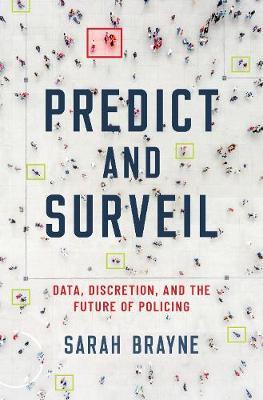Predict and surveil
data, discretion, and the future of policing
- ISBN: 9780190684099
- Editorial: Oxford University Press
- Fecha de la edición: 2021
- Lugar de la edición: New York. Estados Unidos de Norteamérica
- Encuadernación: Cartoné
- Medidas: 24 cm
- Nº Pág.: 210
- Idiomas: Inglés

The scope of criminal justice surveillance, from the police to the prisons, has expanded rapidly in recent decades. At the same time, the use of big data has spread across a range of fields, including finance, politics, health, and marketing. While law enforcement's use of big data is hotly contested, very little is known about how the police actually use it in daily operations and with what consequences.
In Predict and Surveil, Sarah Brayne offers an unprecedented, inside look at how police use big data and new surveillance technologies, leveraging on-the-ground fieldwork with one of the most technologically advanced law enforcement agencies in the world-the Los Angeles Police Department. Drawing on original interviews and ethnographic observations from over two years of fieldwork with the LAPD, Brayne examines the causes and consequences of big data and algorithmic control. She
reveals how the police use predictive analytics and new surveillance technologies to deploy resources, identify criminal suspects, and conduct investigations; how the adoption of big data analytics transforms police organizational practices; and how the police themselves respond to these new data-driven practices.
While big data analytics has the potential to reduce bias, increase efficiency, and improve prediction accuracy, Brayne argues that it also reproduces and deepens existing patterns of inequality, threatens privacy, and challenges civil liberties.
A groundbreaking examination of big data policing, this book challenges the way we think about the data-driven supervision law enforcement increasingly imposes upon civilians in the name of objectivity, transparency, and twenty-first century policing.
Chapter 1. Introduction
Chapter 2. Policing by the Numbers
Chapter 3. Dragnet Surveillance
Chapter 4. Directed Surveillance
Chapter 5. Police Pushback
Chapter 6. Divided by Data
Chapter 7. Litigating Data
Chapter 8. Conclusion: Big Data as Social






